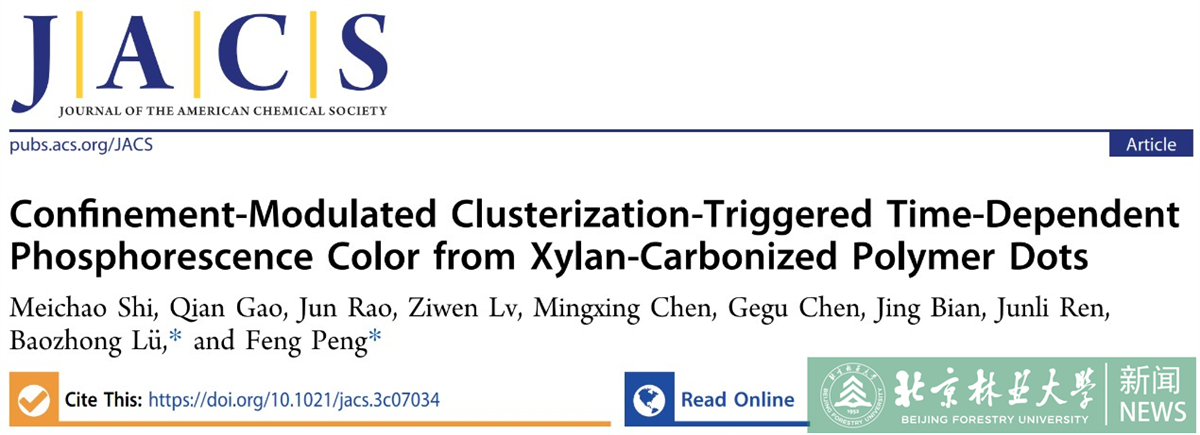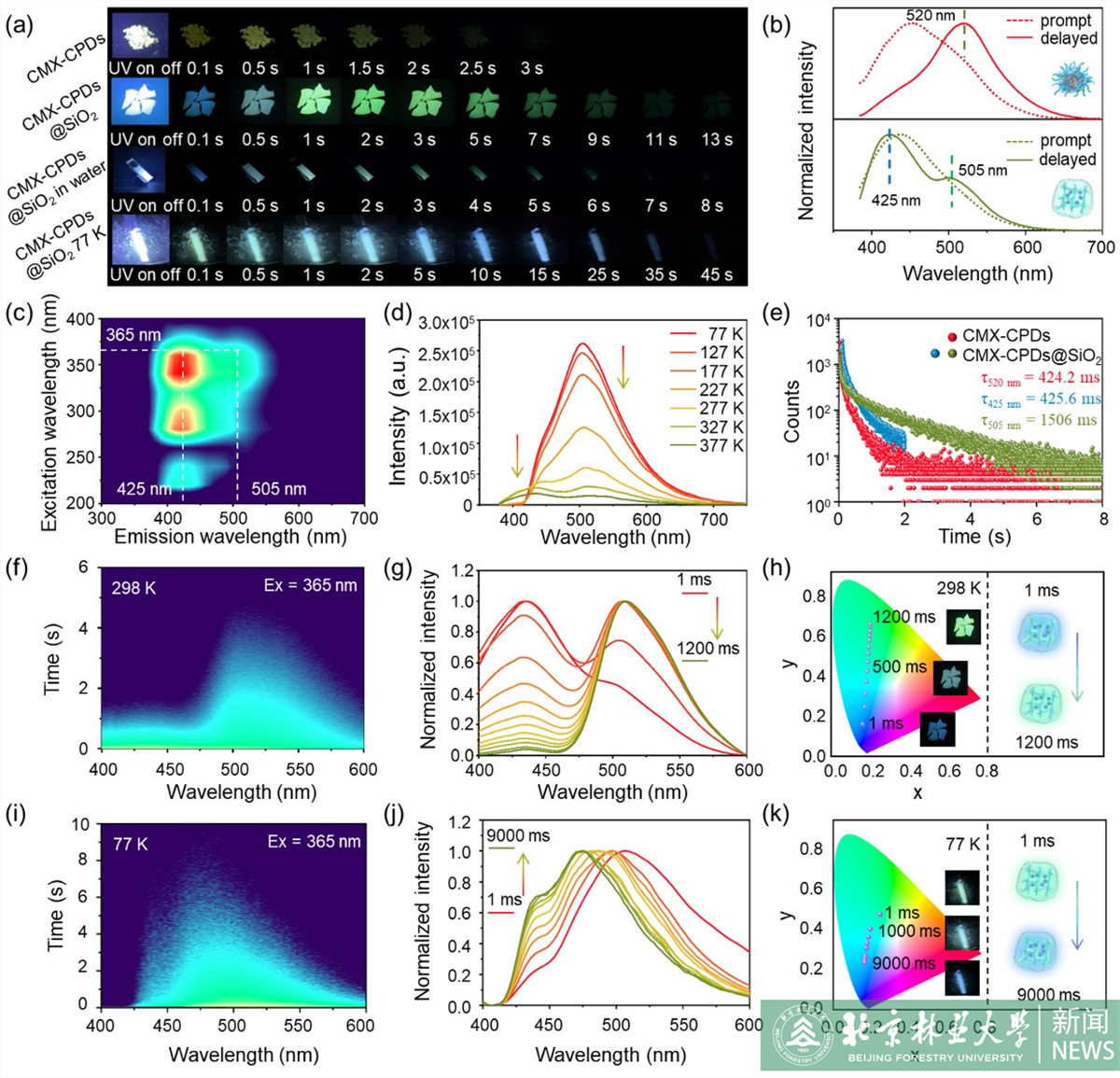Latest news
Recently, Professor Peng Feng's team from the College of Material Science and Technology has made an innovative breakthrough in the study of hemicellulose room temperature phosphorescence. They proposed a novel material called hemicellulose time-dependent phosphorescence color (TDPC), which fully utilizes the efficient cluster-induced phosphorescence potential of hemicellulose atypical luminescence. This research has attracted significant attention in the field. The results of their study, titled "Confinement-modulated clusterization-triggered time-dependent phosphorescence color from xylan-carbonized polymer dots," have been published in the prestigious Journal of the American Chemical Society (JACS), one of the top journals in the field of chemistry.

Achieving time-dependent phosphorescence color (TDPC) in organic materials is attractive but extremely challenging due to the nonradiative decay and modulation puzzle of triplet state. Herein, xylan, a hemicellulose waste from the paper mill, was used to construct carbonized polymer dots (CPDs) with clusterization-triggered room-temperature phosphorescence (RTP). CPDs were endowed with tuneable triplet energy levels by through-space conjugation of heteroatom groups, which could be confined in silica to simultaneously activate surface oxide-related low-energy and cross-linked core N-related high-energy emissive centers. Thus, the blue emissive center with a lifetime of 425.6 ms and green emissive center with a longer lifetime of 1506 ms coexisted in the confined CPDs; the former was the dominant contribution to RTP at first, and the latter became dominant over time, leading to a typical TDPC evolution with large color contrast from blue to blue-green and then to green. Meanwhile, the TDPC could remain unobstructed after the confined CPDs were soaked in water for more than a month. The CPDs were successfully applied in location and deformation imaging of hydrogel and advanced dynamic information encryption and anticounterfeiting. The work may shed new light on the design of TDPC materials and broaden the high-value use of paper-mill waste xylan.

Shi Meichao, a graduate student from the College of Material Science and Technology, is the first author, and youth scholars Lv Baozhong and Professor Peng Feng are the co-corresponding authors.
This work was supported by the National Science Fund for Distinguished Young Scholars (32225034), the National Natural Science Foundation of China (22308028), National Key Research and Development Project of China (2022YFB4201904), the State Key Laboratory of Pulp and Paper Engineering (202308), and the China-111 Project (BP0820033).












